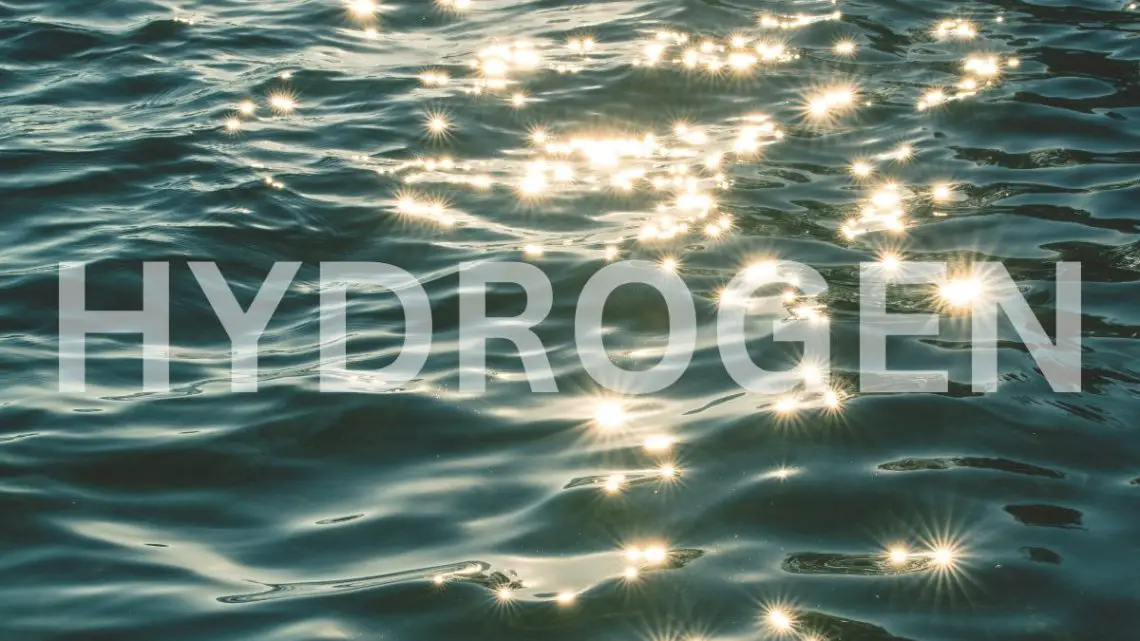
Chinese researchers successfully achieve hydrogen production with seawater
December 26, 2022The team of scientists in China developed a device able to split salt water for producing H2 directly.
A Chinese research team has announced that they have successfully developed a device able to split salty seawater for direct hydrogen production.
The new device is able to overcome the issues previously causing a barrier to seawater electrolysis.
The device developed by the researchers is a membrane-based seawater electrolyzer. This device helps to address the corrosion and side-reaction problems that occur when trying to electrolyze seawater using traditional methods.

The results of the research were published in the Nature journal, in which the team under Nanjing Tech University chemical engineering professor Zongping Shao stated that their device “ran for over 3,200 hours under practical application conditions without failure.”
Currently, the majority of H2 is made using methods powered by fossil fuel, meaning that even though H2 itself doesn’t lead to CO2 emissions when used as a fuel, there are greenhouse gasses emitted from producing it.
“Electrochemical saline water electrolysis using renewable energy as input is a highly desirable and sustainable method for the mass production of green hydrogen,” said the research team in a news release.
Electrolyzing seawater has been a top goal for hydrogen production, but barriers were considerable.
Being able to electrolyze salt water into H2 to be used as a green fuel is an appealing goal, but seawater is notorious for the corrosion it causes to electrodes used in electrolyzers. As a result, electrolyzing seawater is typically seen as unviable.
While some hydrogen production researchers have applied polyanion coatings in attempts to resist the corrosion from chloride ions and some have tried highly selective electrocatalysts, but they have not been appropriate for practical application. Desalinating water requires energy, reducing the efficiency of the hydrogen production in the first place.
“Our strategy realizes efficient, size-flexible, and scalable direct seawater electrolysis in a way similar to freshwater splitting without a notable increase in operation cost,” explained Shao in a media statement.
The team focused their seawater hydrogen production on the use of a concentrated potassium hydroxide electrolyte solution in which the electrodes were dipped. This, combined with a porous membrane helped to separate the seawater and electrolyte solution. The membrane was fluorine rich, allowing water vapor to penetrate it while blocking liquid water.
Using seawater to make hydrogen is not new but this discovery of this new device/technology is. Here is this video that asks the question, What if?
In conclusion, the groundbreaking development of a membrane-based seawater electrolyzer by the Chinese research team presents a promising solution for green hydrogen production.
By overcoming the challenges of corrosion and side-reactions, this innovative device has demonstrated its efficiency, flexibility, and scalability in direct seawater electrolysis. As the production costs of green hydrogen decrease, the popularity of hydrogen cars is expected to thrive, further contributing to the global shift towards sustainable and eco-friendly transportation options. This technological advancement not only paves the way for a greener future but also highlights the potential of utilizing seawater as a valuable resource in the energy sector.



 With over 15 years of reporting hydrogen news, we are your premier source for the latest updates and insights in hydrogen and renewable energy.
With over 15 years of reporting hydrogen news, we are your premier source for the latest updates and insights in hydrogen and renewable energy.
Rather a vague article. Similarly, if I understood correctly Sydney University (I believe it was) has also achieved a similar outcome in the lab and are to upscale to a commercial unit.
Outcome of such work is a game changer.
Sydney Uni have done sodium sulphur battery research.
I believe the Australian experiment was a research paper only. And also written in conjunction with Shaanxi Normal University in China
Right, but at least French recherhers years ago found a way to coate the cathone to expell chloride ions for making hydrogen from sea water.
One more incidence of Chinese negglisense of intellectual prop
erty?
Who says so? Does it really matter if it helps humanity?
In my experiment on BALCON CLOUD RAINING we attached solar panel battery connection with two balloons connected by capillary electrodes. When sea water connecting tubes with electrodes switched on the electrolysis of water transforms in Hydrogen and Oxygen gasseous shape collected in two balloons. Gasses being lighter so balloons starts up ward thrust and air flow may facilitate to take on dessert/draught land side. Then we make connection of electrodes which recombine Hydrogen and Oxygen to term into water with electric lighting quite cobgruous to lightening and thundering during natural cloud raining. A two test tube experiment was shown in Science Popularisation Trip namely BHARAT JAN VIGYAN JATTHA 1984 in India. Dr Ram Swarup Monday. M.Sc. Physics; Ph.D.,D.Sc.
Great to hear, hope its commercial viable soon
Great news
Ahh . . the production of hydrogen from seawater is not an actual goal of anyone. It is done by desalination of seawater with reverse osmosis; followed by normal electrolysis.
I agree Robert.
which consumes a lot of energy greater than the produced hydrogen, not really commercially viable.
the Chinese made it efficient and commercially viable.
I have an international patent pending that uses seawater electrolysis and it removes most of solids and chloride from the seawater. Leaving much cleaner water before it goes through desalination. Cheaper hydrogen,cleaner water, chlorine is sold and the pure water from burning hydrogen is captured and sold, the burning of hydrogen is used as a fuel for combustible engine which spins a generator to produce electricity. This system also uses renewable energy as original power source. The minerals/metals separated from seawater during the electrolysis stage are sold. With that being stated , it is mostly carbon neutral and much cheaper.
Woow what a great achievement. Sea water is abundant. This discovery should be applauded . We waiting for the hydrogen it should address most fuel needs.
This good news for world peace and nature balance to manage pollution control system and fossil fuel high cost and time to associate with your organisation soon thanks spmishra retired consultants for construction industry for last thirty five years in india Delhi office Madhu India international laision and contracts consultants msme registered women’s enterprises Delhi office for solar energy biofuels mixing and bio gas station ev charging stations and solid waste management from city waste management done by me in my company works for organically grown up exported food products manufactured by elworld organic food products and services provider
Sun Hydrogen has already achieved this and is moving into production. Teco 2030, is developing Hydrogen powered engines for shipping.
Please specify what will be the electricity consumption. It may require huge cost.
Hydrogen fuel will be the next fuel for cars not lithium powered batteries. Our cars should already be running on hydrogen but we need to get along with big oil instead of phasing it out until we can achieve these goals and let big oil phase it’s own self out instead of the rich politicians doing it and costing the people a lot of money.
Electric car motors are a magnet wrapped by wire, hydrogen cars still too much ,pounding of pistons, exploding
combustion,parts opening closing,still noise ,and component futiliity
But for turbines or electric generation is King Hydro